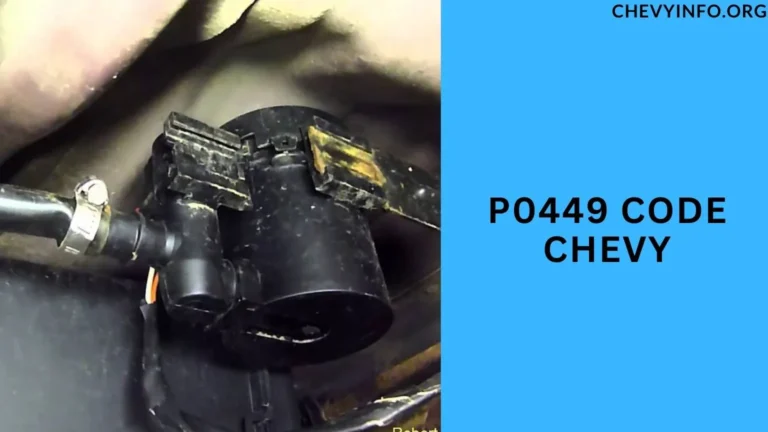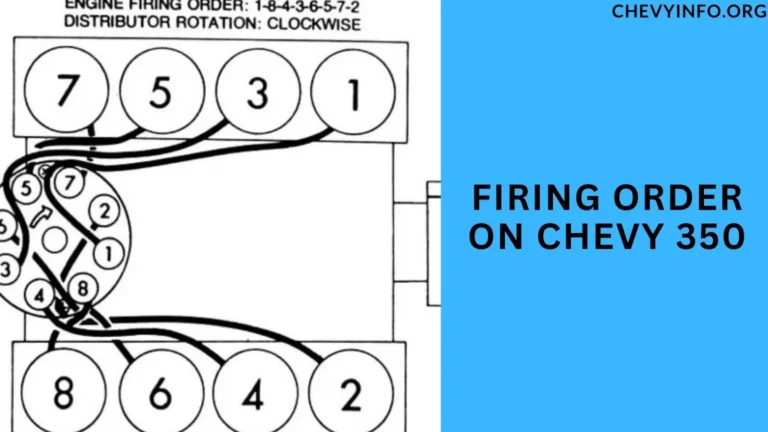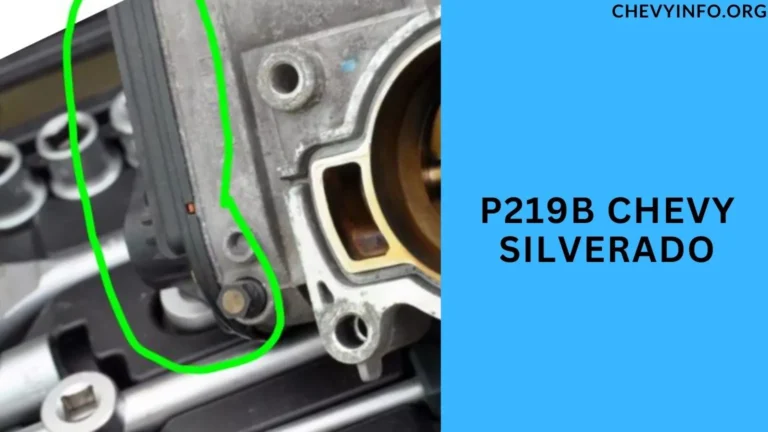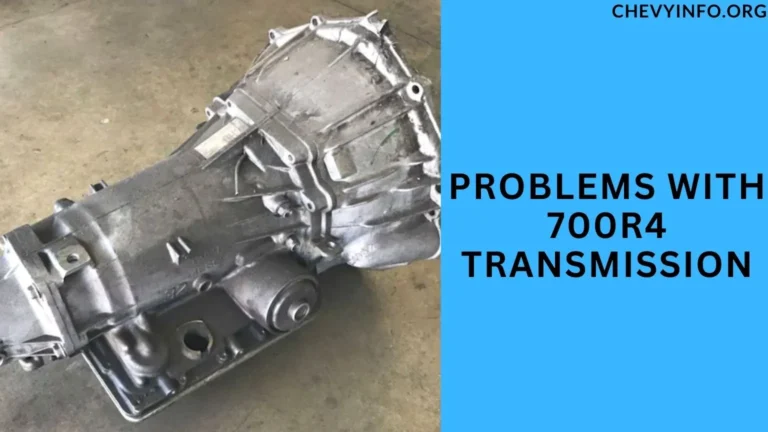Chevy Block Casting Numbers (Explained) of 2024
Chevy block casting numbers play a crucial role in identifying and understanding Chevrolet engines.
They provide valuable information about the engine’s specifications, manufacturing details, and compatibility with other parts.
In this article, we’ll delve into the significance of block-casting numbers and how to decode them.
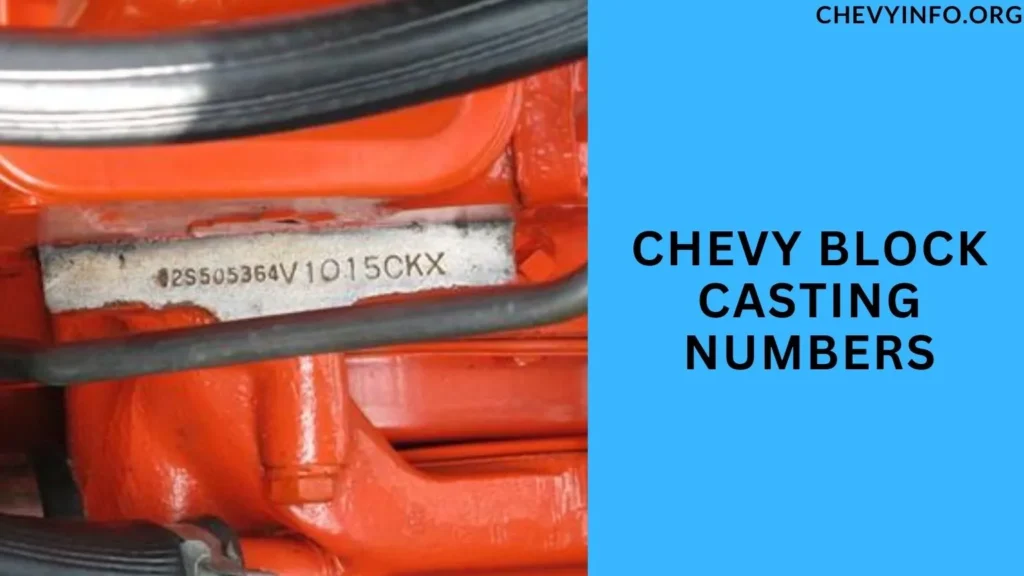
Importance of Identifying Casting Numbers
Identifying casting numbers is essential for several reasons:
- Determining engine model and year
- Confirming compatibility with replacement parts
- Understanding engine specifications (e.g., displacement, horsepower)
- Verifying authenticity for collectors and enthusiasts
Understanding Chevy Block Casting Number Format
Block casting numbers of Chevy typically follow a specific format, including:
Prefix
The prefix indicates the engine type, such as small-block (SBC) or big-block (BBC), and may include additional details like the intended vehicle application.
Casting Date Code
The casting date code provides information about when the engine block was cast, including the month and year.
Engine ID Code
The engine ID code contains alphanumeric characters that further identify the engine variant, such as specific features or performance upgrades.
Engine Plant Code
The engine plant code indicates where the engine was manufactured, providing insight into production facilities and processes.
How to Locate Chevy Block Casting Numbers?

Block casting numbers are typically located in specific areas of the engine block, such as:
- Cylinder head surface
- Engine block deck
- Bellhousing flange
- The rear of the block near the transmission mount
Decoding Block Casting Numbers In Chevy
Decoding block-casting numbers involves using reference guides or online databases specific to Chevrolet engines.
These resources help interpret the prefix, date code, ID code, and plant code to reveal details about the engine’s origin and specifications.
Here’s a brief guide:
Prefix
The prefix indicates the engine type (e.g., small-block or big-block) and may include additional details about the intended vehicle application.
Casting Date Code
This code provides information about when the engine block was cast, including the month and year of production.
Engine ID Code
The engine ID code contains alphanumeric characters that further identify the engine variant, such as specific features or performance upgrades.
Engine Plant Code
The engine plant code indicates where the engine was manufactured, providing insight into production facilities and processes.
Significance of Casting Numbers in Chevy Engines
Casting numbers play a crucial role in verifying engine authenticity, identifying replacement parts, and ensuring compatibility with performance upgrades.
They are essential for restoration projects, engine swaps, and maintenance tasks. The casting numbers in Chevy engines hold significant importance for several reasons:
Identification
Casting numbers help identify the engine model, year of production, and specific variants within a series (e.g., small-block or big-block).
Compatibility
Knowing the casting numbers ensures compatibility with replacement parts, accessories, and performance upgrades designed for that specific engine.
Authenticity
Matching casting numbers verify the authenticity of an engine, which is crucial for collectors, restorers, and enthusiasts interested in maintaining originality.
Specifications
Casting numbers provide insight into engine specifications, such as displacement, horsepower rating, compression ratio, and internal components.
Historical Context
Understanding casting numbers allows enthusiasts to trace the engine’s history, including production changes, revisions, and manufacturing details.
Maintenance and Repair
Mechanics and technicians use casting numbers to ensure they’re working with the correct engine components during maintenance, repairs, and rebuilds.
Value
For vintage or classic cars, having matching casting numbers enhances the vehicle’s value and authenticity in the automotive market.
People also ask
How to look up Chevy block numbers?
To look up block casting numbers, you can:
Locate the casting numbers stamped or cast on the engine block.
Use online databases or reference guides specific to Chevrolet engines.
Enter the casting numbers into the search tool to retrieve information about the engine model, year, specifications, and compatibility with parts.
How do you decode a Chevy engine block?
To decode a Chevy engine block, follow these steps:
Identify the casting numbers stamped or cast on the engine block.
Refer to online databases, official Chevrolet documentation, or reference guides specific to Chevy engines.
Decode the prefix, casting date code, engine ID code, and engine plant code to reveal details about the engine’s model, year, specifications, and manufacturing origin.
What are the stamped numbers on a Chevy block?
The stamped numbers on a Chevy block typically include the engine’s casting number, which identifies the engine model, year, and specifications.
These numbers are often located on the engine block near the cylinder head surface, engine block deck, bell housing flange, or rear of the block near the transmission mount.
What is GM block casting number 3970010?
The GM block casting number 3970010 is associated with a small-block V8 engine produced by General Motors.
It was commonly used in various Chevrolet vehicles during the 1969-1979 period and is known for its durability and compatibility with performance upgrades.
Conclusion
In Conclusion, Chevy block casting numbers are valuable identifiers that provide insight into Chevrolet engine history and specifications.
Understanding how to decode and interpret these numbers can benefit mechanics, enthusiasts, and collectors in various automotive endeavors.

Henry Worner, a seasoned automotive expert with over 13 years of experience in car repair, maintenance, and performance enhancement, ChevyInfo.org was born out of a passion for Chevrolet vehicles. Henry’s deep-rooted love for everything Chevy has driven him to create a platform where fellow enthusiasts, car owners, and anyone interested in Chevy cars can find valuable insights, tips, and guidance.

